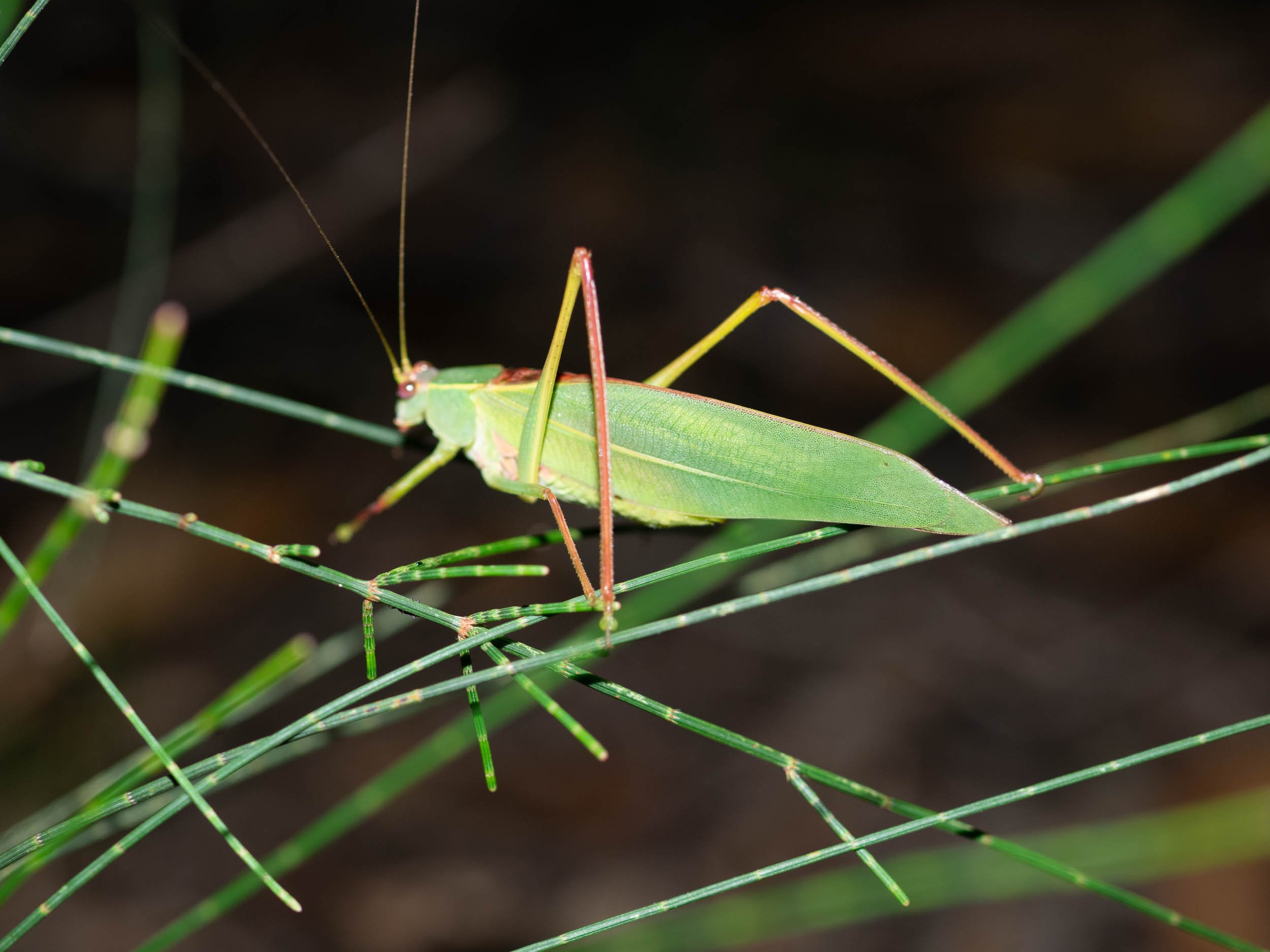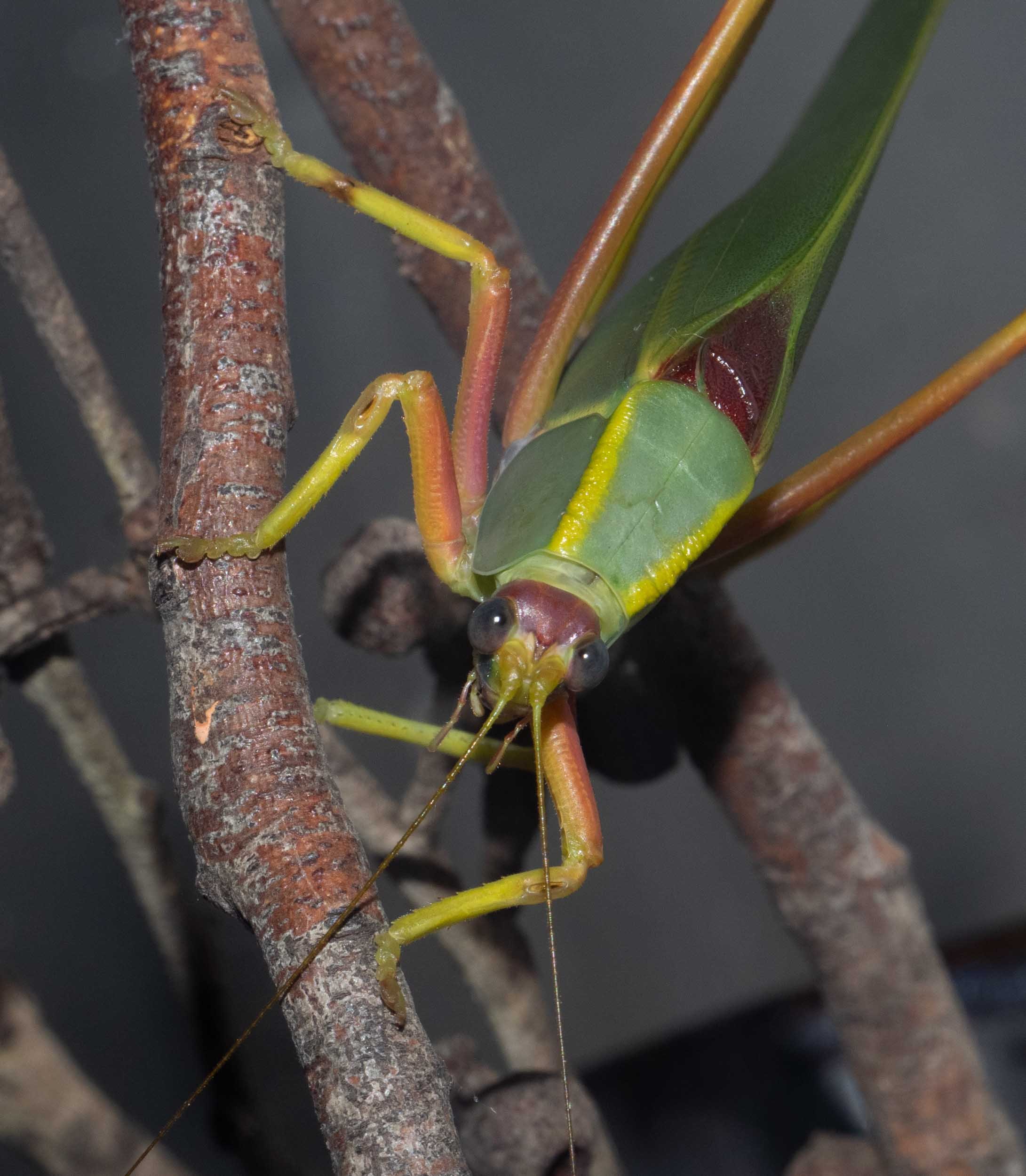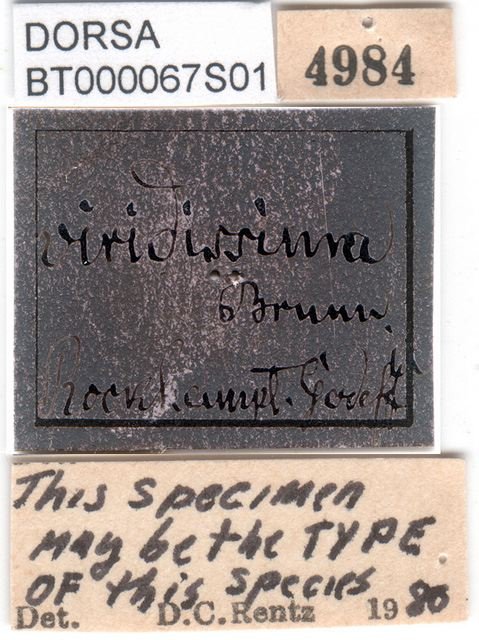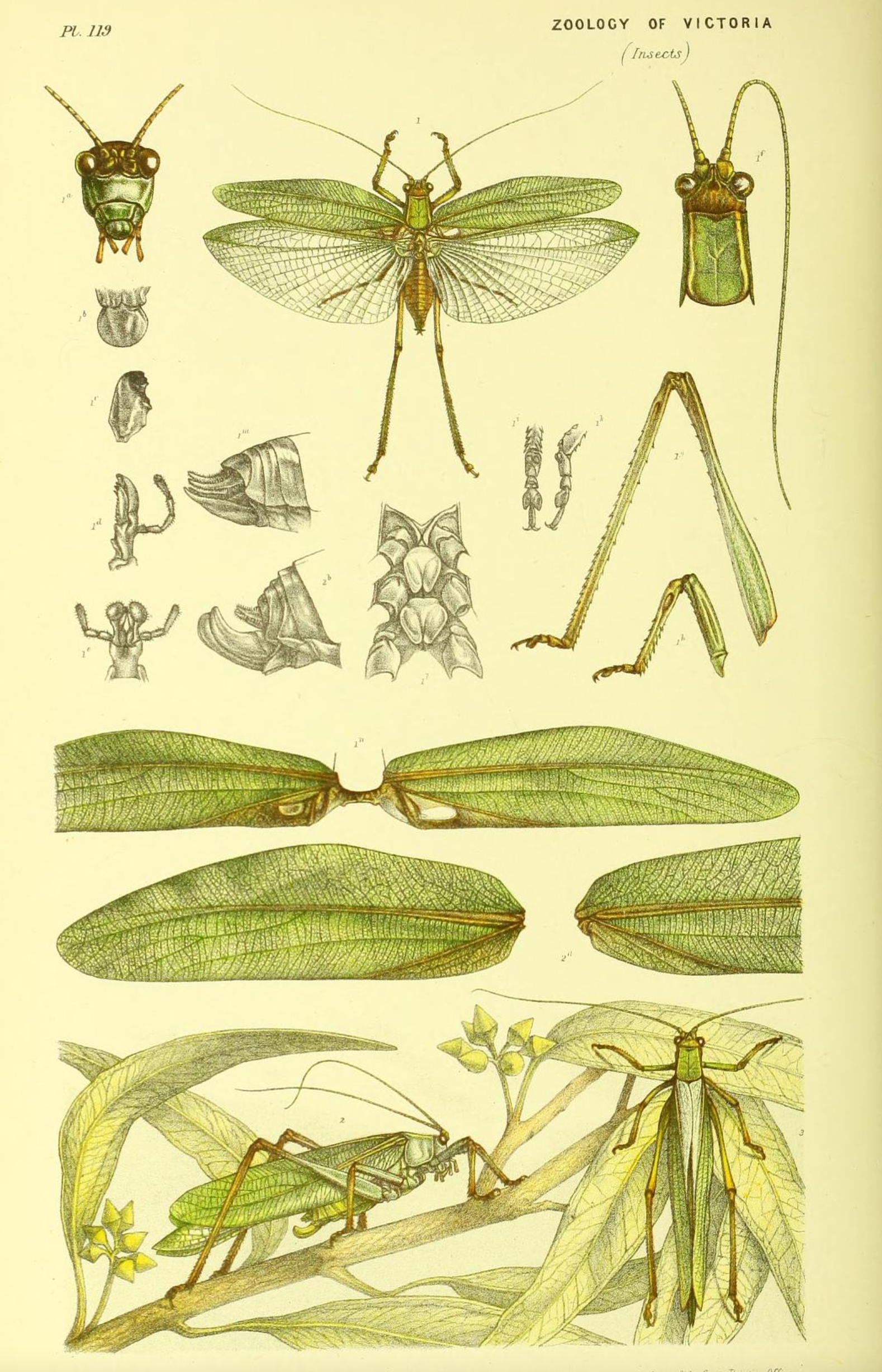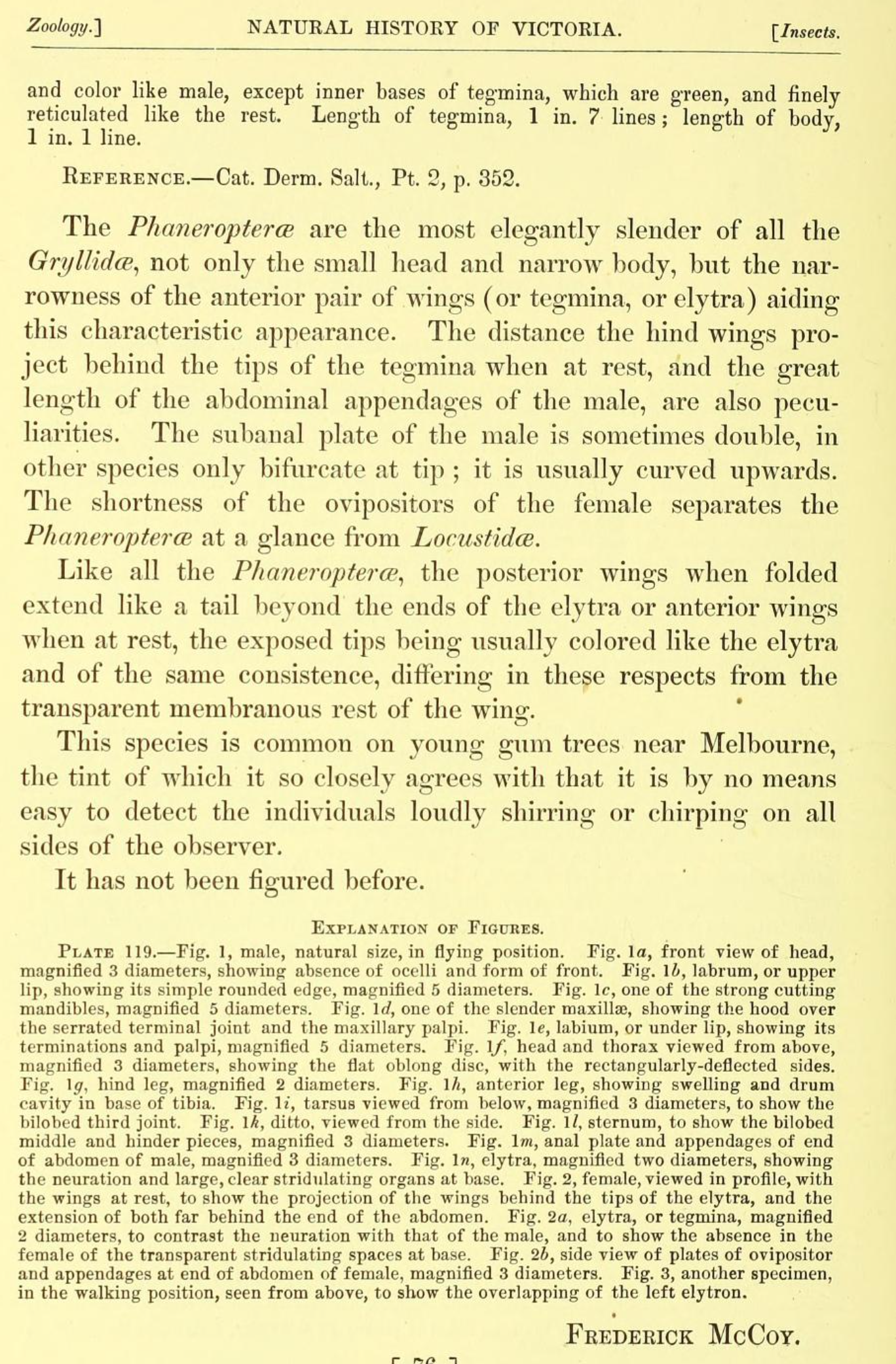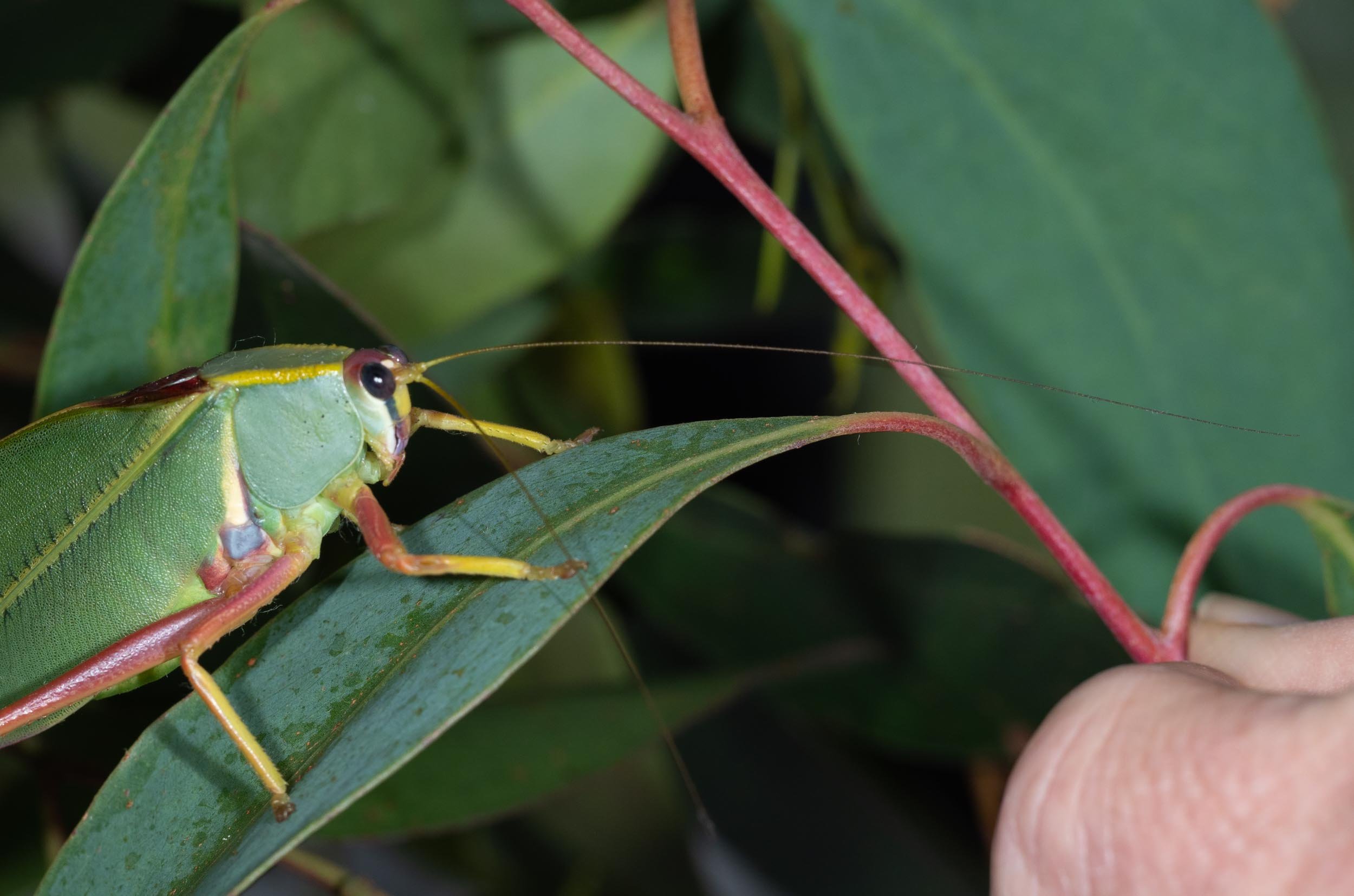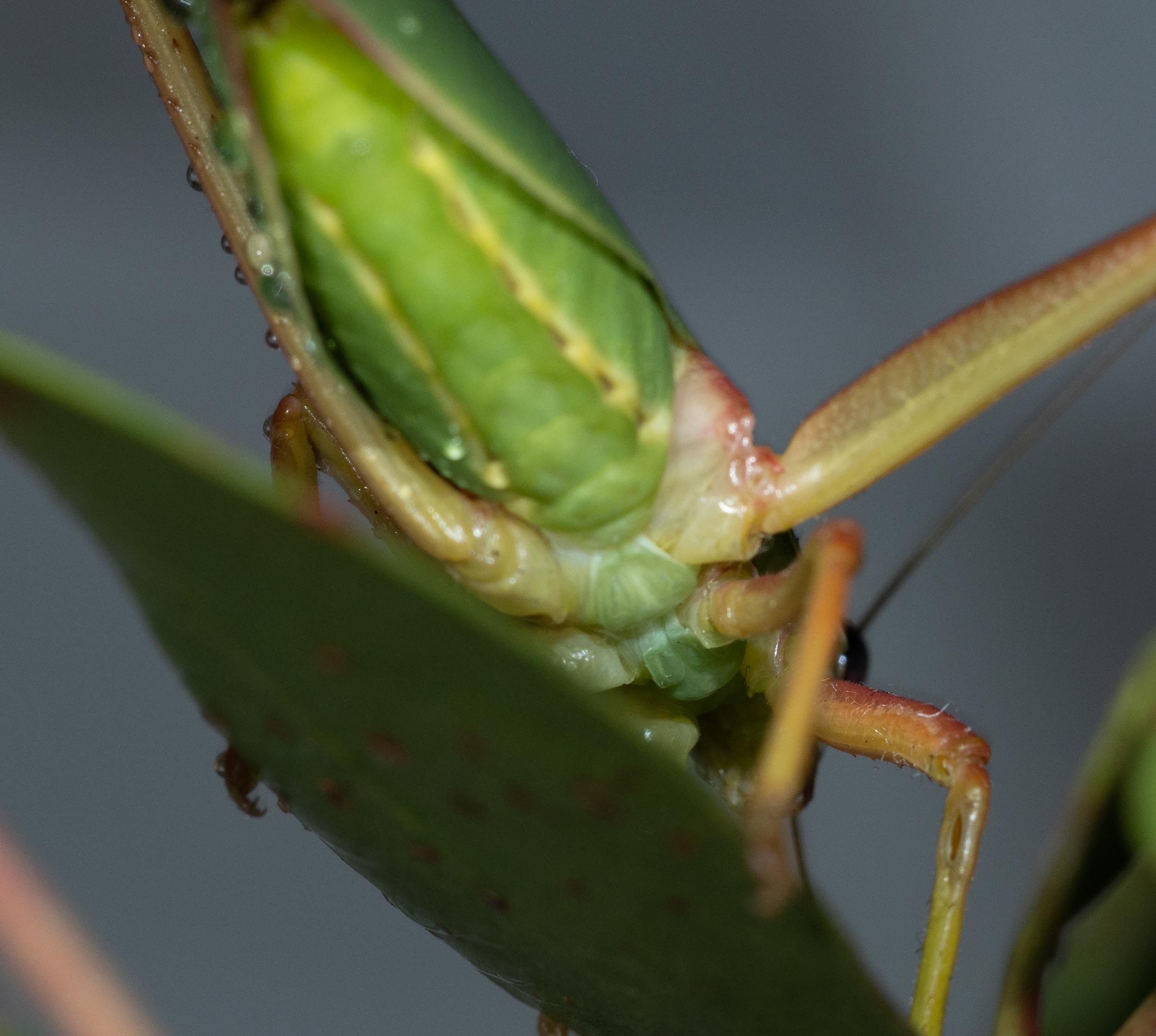Torbia - new species?
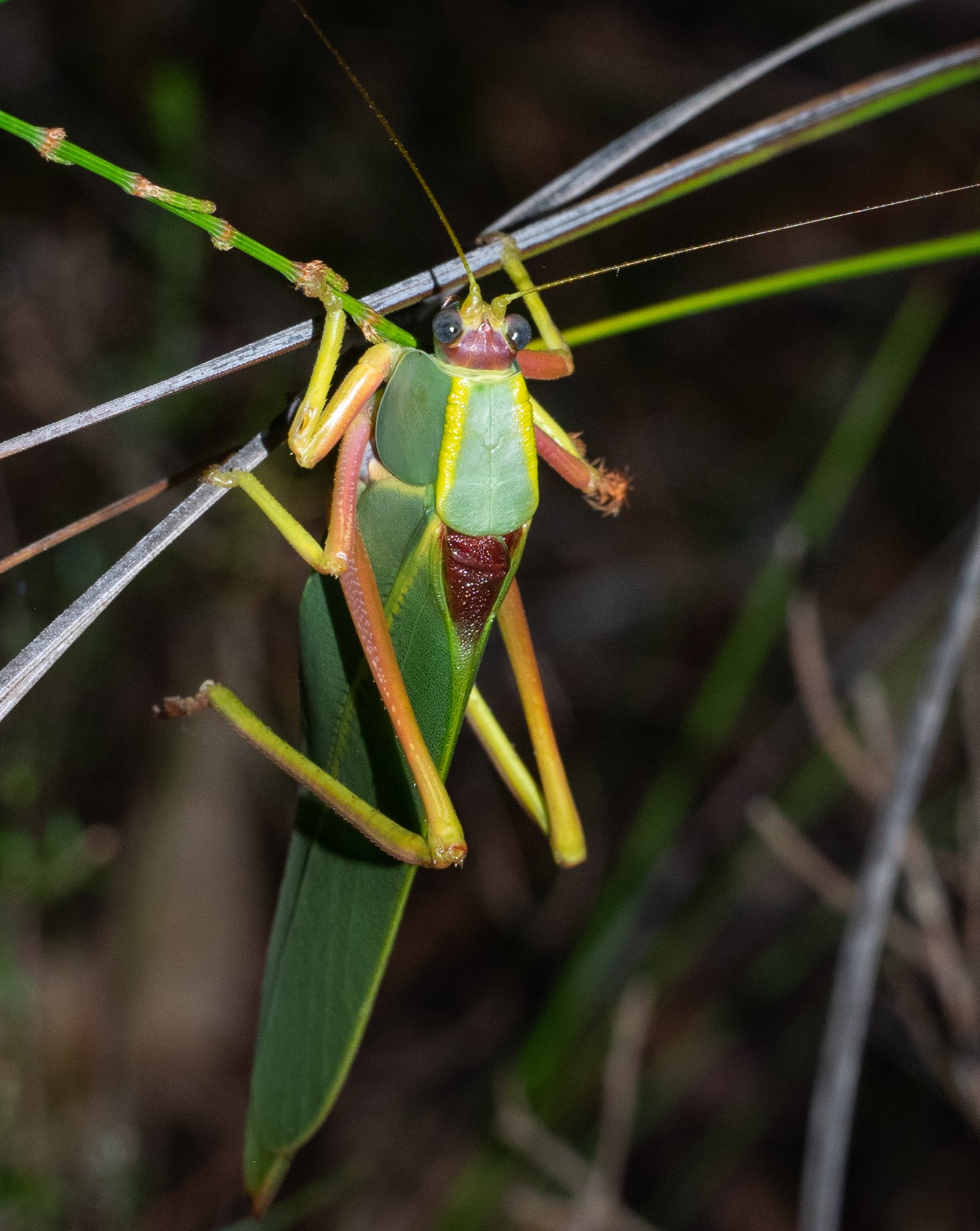
Workbook
On the lightsheet of April 4, 2019 we saw several individuals of a Torbia sp., which we identified as Torbia perficita - iNaturalist observation here.
Matthew Connors suggested this might be a new species - “This is an interesting and extremely uncommon species, and it may be undescribed - great find! It is similar to T. perficita but is much more colourful, and has very distinctly 'wrinkled' yellow stripes on the pronotum”.
I commented that “I’ve looked at the original descriptions of the 5 Torbia species on AFD (Tepper 1892 and Brunner von Wattenwyl 1878 papers) and none of them seem to fit this Torbia. I’ve also looked through images of Torbia on iNaturalist and ALA and Google searches and can’t find anything that looks like it. I’m just wondering where you saw this species.”
He replied “Yeah it doesn't really seem to be a match for anything but the descriptions of the other Torbia species are not very detailed. I've seen this one posted on one or two Facebook groups and there are two sightings on iNat now, but other than that I don't know of any other places. I think it's likely that ANIC would have some specimens of it though.”
AFD lists 5 Torbia spp. - T. costulata (Brunner von Wattenwyl, 1892), T. elderi (Tepper, 1892), T. indivisa (Tepper, 1892), T. perficita Walker, 1869 and T. viridissima (Brunner von Wattenwyl, 1878).
Tepper 1892 (Transactions of the Royal Society of South Australia 15, 1892), Rentz (A Guide to the Katydids of Australia, CSIRO 2010) give the following descriptions of the Torbia spp. (junior synonym is Dictyota) and Catalogue of the specimens of Dermaptera, Saltatoria and supplement of the Blattari in the collection of the British Museum. Walker 1869, p. 388-389.
Dictyota viridissima, Brunner
”Bright-green and whitish. Pronotum with rough, transverse ridges very minute or absent. Elytra in the middle about one and a half times as wide as the length of the pronotum; transverse veinlets in the marginal area rather remote, radial branch forked in the middle. Size small.”
Length of body Male 22mm, Female 25mm
Length of pronotum Male 5mm, Female 6mm
Length of elytra Male 31mm, Female 40mm (31mm measured from syntype in OSF)
Width of elytra Male 7.5mm, Female 11mm (6mm measured from syntype in OSF)
Length of hind femora Male 20mm, Female 26mm (21mm measured from syntype in OSF)
Length of ovipositor 4mm
Habitat - Rockhampton, Moreton Bay (Brunner).
Torbia viridissima (Brunner von Wattenwyl)
”This species is found from coast to coast in almost all habitats where eucalypts occur. Like T. perficita, there are marks on the thorax. In addition, the posterior margin of the lateral lobe of the pronotum is produced. The veins of the tegmina are not as well indicated as in that species. Torbia viridissima nymphs resemble ants and always attract attention. As they mature, the nymphs lose the ant-like appearance and use their green colouration as camouflage.”
Images below taken from Orthoptera Species File
Dictyota indivisa, Tepper
”Size moderate. Head (except vertex), all femora, and sternum whitish. Pronotum wider behind, lateral carina ferruginous. Eyes brown. Elytra dull olive-green, radial and ulnar veins brownish, former bordered paler at the base. Transverse veinlets in the marginal area rather remote. Radial veins widely separate at the apex, first branch not forked, nor any of the three succeeding ones (to this character the specific name alludes). Cerci not much incurved. Abdomen greenish, banded with brown. Ovipositor about twice as long as the cerci.
Length of body Female 23mm
Length of pronotum Female 6mm
Length of elytra Female 38mm
Width of elytra Female 9mm
Length of hind femora Female 19mm
Length of hind tibiae Female 14mm
Length of ovipositor 5mm
Habitat - vicinity of Adelaide, only specimen captured in the parklands of the city on April 26, 1889. Allied to D. viridissima, but differs chiefly in proportions, the four simple radial branches and the comparatively short hind tibiae.”
Type specimen: SAM Adelaide
Dictyota costulata, Brunner
Size large. Olive-green, head and pronotum whitish, latter with rough transverse ridges; elytra with just one colour, transverse veinlets of marginal area of elytra very close, radial branch forked much before the middle, succeded by 3 simple ones.
Length of body Male 30mm
Length of pronotum Male 9mm
Length of elytra Male 50mm
Width of elytra Male 13mm
Length of hind femora Male 29mm
Habitat - Sydney (Brunner). Differs from D. viridissima in size, the closely spaced transverse veinlets in the marginal field and the branches of the radial nerve, which branches clearly before the middle, followed by the other three branches.
Type specimen: NMW Vienna Museum - male
Dictyota elderi, Tepper
”Size moderate. Pale-green. Head, pronotum (except hind-margin and posterior angles of deflexed lobes, which are green), all the legs, base of elytra, abdomen, and the underside of the thorax creamy or testaceous-white. Disk of pronotum equally wide in front and behind, lobes with three furrows, all rough with minute pits. Elytra lanceolate, broadest at or slightly beyond the middle, apex rounded; tranverse veinlets in marginal area moderately crowded, in parts considerably reticulate; ulnar vein brown; radial veins much separated at the apex, the posterior terminating in the apex; first radial branch forked beyond the middle, and succeeded by two simple ones. Hind femora slender, subterete. Hind tibiae almost triangular, spines below small to minute.”
Length of body Female 30mm
Length of pronotum Female 6.5mm
Length of elytra Female 40mm
Width of elytra Female 10mm
Length of hind femora Female 30mm
Length of hind tibiae Female 21mm
Length of ovipositor 3mm
Habitat. Mount Squires, Central Western Australia, only specimen captured in August 1891. The species is allied to D. pruinosa, but differs in size, colour, proportions, the branches of the radial vein, its termination in the apex, &c.
Type specimen: SAM Adelaide
Torbia perficita, Walker - from Walker
Male and female. Green, here and there pale luteous. Eyes tawny. Antennae red, green at the base. Hind wings pellucid; apical patch and veins green. Length of body 18-21 lines; expansion of the forewings 50-58 lines.
Torbia perficita, Walker - from Rentz 2010
”This is the largest known species of the genus. It has a relatively broad range, occuring along the east coast from the tropics to Victoria. It is found in moist eucalypt and mixed woodland forests where it spends the day high in the trees. It is readily attracted to lights at night.
Apart from its large size it is distinctive in having the veins of the tegmina strongly indicated both in structure and emphasised by colour. The posterior margin of the pronotum is well produced. There is a pinkish-purple mark on the thorax that is very prominent.”
Dictyota pruinosa, Brunner (junior synonym) - from Tepper 1892
Size large. Brownish-green; head, pronotum and the base of the elytra and femora whitish. Lateral edges of pronotum rought and scabrous. Width of elytra twice the length of pronotum, form lanceolate, apex acuminate; transverse veinlets of marginal area very close; radial branch forked in the middle. Fore coxae with a small spine.
Length of body Female 38mm
Length of pronotum Female 10mm
Length of elytra Female 65mm
Width of elytra Female 20mm
Length of hind femora Female 33mm
Length of ovipositor 4mm
Habitat. New Holland; Auckland, New Zealand (Brunner). Size and the whitish dust covering it give the species the aspect of Stilpnochlora, a Brazilian and West Indian genus of the group STEIRODONTIA, otherwise far removed.
Type specimen. BMNH London - images below from Orthoptera Species File
Kerri found a dead specimen of Torbia perficita on Old Bridge Road on May 23, 2018. The iNaturalist record is here.
Matthew Connors has confirmed this as Torbia perficita. It looks very similar to the images in Rentz 2010.
Drawing of Torbia perficita (Phaneroptera valida) from McCoy’s Prodromus Natural History of Victoria. Plate 119
Conclusion:
The Torbia sp. we found on the lightsheet is clearly different to both Torbia viridissima and Torbia perficita.
Comparison with T. indivisa
Size moderate female body 23mm elytra 38mm (vs. large body 30mm elytra 50mm for new species).
lateral carina ferruginous (vs. yellow for new species)
first branch of radial veins not forked (first branch is forked in the new species)
abdomen greenish, banded with brown (not banded with brown in new species)
no mention of thickened, wrinkled, yellow lateral carina, purple vertex or purple anal region of tegmina in T. indivisa.
Comparison with T. costulata
pronotum with rough transverse ridges (no sign of these in new species)
other characters in description are not inconsistent with new species, but no mention of the wrinkled yellow lateral carina or purple tegmina anal region.
Comparison with T. elderi
size moderate body 30mm elytra 40mm (vs large 30mm body, 50mm elytra for new species)
colouration of head, pronotum legs, abdomen and underside of thorax creamy or testaceous white (vs. green/yellow for new species)
disk of pronotum equally wide in front and back (wider in back than front in new species)
lobes with 3 furrows, all rough with minute pits (no apparent sign of this in new species)
other characters in description are not inconsistent with new species, but no mention of the wrinkled yellow lateral carina or purple tegmina anal region.
location of Central WA doesn’t fit
29th March 2022 - New sighting of new Torbia sp.
A single individual was found on the lightsheet of 29/30 March 2022. First seen at 11:25pm. Captured and placed in buddy tank.
Appears identical to the suspected new Torbia sp. - male
elytra length = 57mm
elytra width = 16mm
pronotum length = 8mm
length of body = 30mm
length of hind femora = 25mm
Suspected sightings of new Torbia sp. on iNaturalist
All of these show the following characters in common with our new species:
red vertex
blue eyes
red femur 3 (except 71548022 and 102524445, which have yellow femora 3)
wide, crinkly, bright yellow lateral carinae of pronotum
edges of radius marked with short, black lines
25574504 - Lakes Entrance 14/3/15
64511800 - SE Queensland 9/11/20
62477615 - SE Queensland 13/10/20
71548022 - Brisbane 19/3/21
102524445 - SE Queensland 9/8/21
71697598 - Bega 29/3/17
92993315 - Gold Coast 29/8/21
Update 31 March 2022
Matthew Connors posted a note on our observation of this new Torbia sp. “Update from You Ning Su - this is a new genus close to Torbia, currently designated Genus Novum 16, Species 1. There is an observation field to track the species”.
I have replied that we’ll contact You Ning Su to tell him that we have this specimen.
You Ning Su replied to my email on 5 April 2022 to confirm that our new Torbia sp. was indeed designated Torbia Genus Novum 16, Species 1 and is identical to images of type specimens of Dictyota pruinosa made by David Rentz. It seems that Kirby (1906) mistakenly synonomised this species with Torbia perficita.
Correction of this error and assignment of a new name to this species will have to wait a revision of the phaneroptine katydids.
This is a workbook page … a part of our website where we record the observations and references used in making species identifications. The notes will not necessarily be complete. They are a record for our own use, but we are happy to share this information with others.


